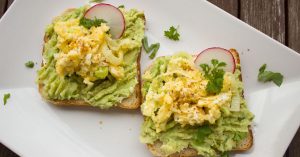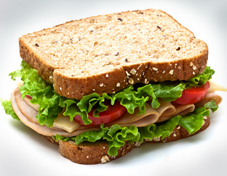Introduction
Platters hold a special place in the culinary world, combining the delights of various foods into a single, visually appealing presentation. They are not just about serving food; they represent a social and cultural phenomenon that brings people together. From cheese boards to sushi platters, the diversity in platter types reflects the global appreciation for enjoying mixed delicacies in one sitting. This blog explores the intricacies of creating beautiful and tasty platters, offering tips and tricks to enhance your next dining experience, whether it’s a casual gathering or a formal event.
Types of Platters: A World of Variety

Platters for occasions can vary significantly depending on the occasion, audience, and geographical location. A typical cheese platter in France might feature a selection of Brie, Camembert, and Roquefort, accompanied by baguettes and a variety of nuts and fruits, while a Middle Eastern platter might boast an array of hummus, tabbouleh, and falafel. The beauty of platters lies in their versatility. You can tailor them to fit any dietary preference or culinary tradition. Understanding the different types of platters is essential in crafting one that suits your needs, whether it’s meat-heavy, seafood-focused, or completely vegetarian.
Choosing the Right Ingredients for Your Platter
Selecting the right ingredients is crucial in creating a platter that not only looks appealing but also tastes harmonious. The key is to focus on freshness and variety. Similarly, for a charcuterie platter, the quality of the meats and cheeses will determine the overall satisfaction of your guests. Consider the textures and flavours that will complement each other and think about including elements that can add a pop of colour, like vibrant fruits or edible flowers, to make your platter stand out.
Arrangement Techniques: Enhancing Visual Appeal
The arrangement of a platter can transform simple ingredients into a masterpiece. Start by choosing a focal point, typically a larger or uniquely shaped item, and arrange other elements around it. Use small bowls or cups to contain messier or smaller items like olives or dips. Balance is also critical; distribute colours and textures evenly so that the platter is visually appealing from all angles. Remember, the goal is to entice your guests to try a bit of everything, so make all parts of the platter easily accessible and appealing.
Pairing with the Perfect Beverages
A well-considered beverage pairing can elevate the experience of a platter. Wine is a classic choice, but not just any wine—the right wine. For cheese platters, a rule of thumb is to pair the intensity of the cheese with the wine; a robust Cheddar pairs well with a bold red wine, while a delicate Brie might suit a light white wine. For seafood platters, crisp white wines or even champagne can complement the freshness of the seafood. Don’t forget about those who prefer non-alcoholic options; sparkling waters with a hint of citrus or herbal teas can also complement the flavours of your platter.
Seasonal Platters: Catering to the Time of Year
Seasonality plays a significant role in the composition of a seasonal platter. A summer platter might feature fresh berries, sliced melons, and lighter cheeses, while a winter platter could lean towards richer items like roasted nuts, dried fruits, and hearty meats. Utilising seasonal ingredients not only enhances the taste but also ensures that the items are at their peak freshness, which can significantly impact the overall quality and experience of the platter.
Dietary Considerations in Platter Preparation
Today’s dietary needs are diverse, and accommodating them can be a challenge when preparing a platter. It’s important to consider allergies, vegetarian preferences, and other dietary restrictions. Offering a variety of items can ensure that there’s something for everyone. Labelling the components can help guests avoid anything they need to steer clear of and makes the experience more inclusive and enjoyable for all.
Essential Tools for Platter Preparation
Having the right tools at your disposal can simplify the process of assembling a platter. A set of good quality knives is essential for slicing fruits, cheeses, and meats precisely. Additionally, different sizes of cutting boards, platter trays, and serving utensils are important for both preparation and presentation. Investing in these tools not only makes the preparation easier but also helps in achieving a more professional and appealing look.
Platters as a Focal Point in Event Catering
In event catering, platters are not just food; they are part of the event’s decor and ambiance. A beautifully designed platter can serve as the centrepiece of a dining table, drawing guests in and sparking conversation. Whether it’s a wedding, a corporate event, or a casual get-together, platters can be customised to reflect the theme and style of the event, adding a touch of elegance and flair.
Tips for Preserving the Freshness of Your Platter
The freshness of your platter is paramount, especially if it needs to be prepared in advance. Techniques such as covering perishable items with damp, clean cloths or using appropriate cooling elements can help in maintaining the freshness. For items prone to drying out, such as cheeses and cold cuts, they should be served close to the time of eating or kept in well-sealed containers until needed.
Conclusion
Platters are a celebration of food and creativity. They offer endless possibilities to mix and match flavours, textures, and colours. By following the guidelines outlined above, you can master the art of platter preparation and turn your next gathering into a memorable culinary adventure. Embrace the versatility and joy that platters bring to the table and let your culinary creativity shine.




Leave a Reply